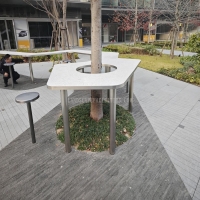Welcome to the website for landscape facilities products and knowledge.
How does the bin’s design ensure it remains resistant to corrosion in coastal areas?
In coastal areas, waste bins face constant exposure to saltwater, humidity, and corrosive elements. To combat this, manufacturers employ advanced design strategies to ensure long-lasting durability.
1. Material Selection: High-quality stainless steel (e.g., 304 or 316 grade) is often used due to its exceptional resistance to rust and oxidation. Marine-grade aluminum is another popular choice for its lightweight yet robust properties.
2. Protective Coatings: Bins are treated with powder coatings or epoxy layers that create a barrier against saltwater penetration. Galvanization is also applied to steel bins for added protection.
3. Design Features: Elevated bases prevent standing water accumulation, while seamless welding reduces crevices where corrosion can start. Ventilation slots minimize moisture buildup inside the bin.
4. Saltwater-Resistant Hardware: Hinges, locks, and bolts are made from non-corrosive materials like brass or marine-grade polymers to avoid degradation.
5. UV Stabilization: Coastal bins often incorporate UV-resistant additives in plastic components to prevent sun damage, which can accelerate corrosion.
By combining these elements, modern coastal bins maintain structural integrity even in the harshest seaside conditions, offering reliable waste management solutions for years.
Related search:

Recommendation
An outdoor bar counter with stainless steel and terrazzo materials in an irregular shape